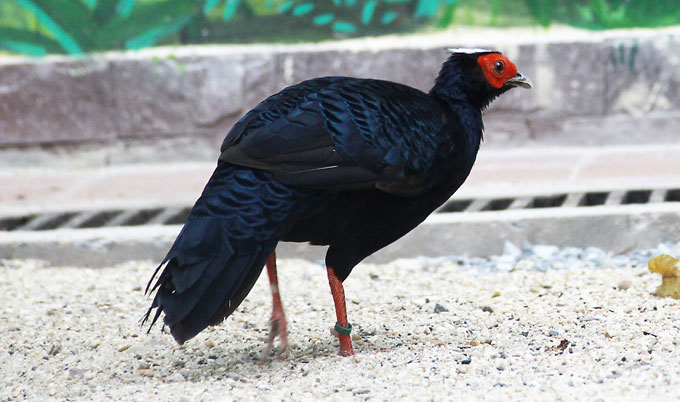Edwards' Pheasant
In search of Edwards’ Pheasant
Published on: 18 August 2017
Genuinely extinct or just not worth looking for? Scientists set out to discover just how endangered certain species are.
Scientists are heading off in search of a rare species of bird which has not been seen for 17 years.
The research team, led by Newcastle University, UK, are to search for Edwards’s Pheasant, a bird that was listed as Critically Endangered on the IUCN Red List in 2012.
First recorded in 1895, Edwards’ Pheasant is endemic to central Vietnam but excessive hunting and loss of habitat means it is now on the brink of extinction.
Or at least that is what scientists assume.
Now a team of experts from the universities of Newcastle and Bangkok have compiled data of all known sightings and recordings of this rare species of Galliform and have identified two locations where it may still exist in the wild.

Conservation biased towards 'popular' species
Publishing their findings today in the academic journal Oryx, the team are now using this information to aid in the search for Edwards’ Pheasant to find out if it really is as endangered as scientists believe or if we just haven’t been looking for it in the right places.
“For well-known, easily-detectable species like the Bornean Orangutan or the Giant Otter we have good data which provides a sound basis for conservation,” explains lead author Dr Matthew Grainger, from Newcastle University.
“But some species that are believed to have the highest probability of extinction are also amongst the most poorly known.
“With birds, for example, the recorded sightings by amateur birdwatchers are as important as the official data collected by scientific teams. But this means well-loved and interesting species such as the Robin or Wren are well documented while many others, including Edwards’ Peasant, hardly feature.
“Sadly, the last confirmed recorded sighting of Edwards’ Pheasant was in 2000 when a single wild bird was seized from poachers.
“I think there’s little doubt this beautiful bird is on the threshold of extinction, but if no-one is out there looking for it then how do we know if there’s a population out there worth protecting or if our scarce resources would be better used elsewhere?”
Effective conservation
Habitat loss, poaching, human activities and climate change mean that every day, more animals are being forced to the brink of extinction.
All these threatened animals are included on the International Union for Conservation (IUCN) Red List of Threatened Species, the world’s most comprehensive inventory of the global conservation status of species.
“The IUCN red list tells us how close to extinction species are,” explains Dr Phil McGowan, co-author on the paper and a recent co-chair of the IUCN Species Survival Commission's Policy Subcommittee.
“If a species moves into one of the threatened categories — vulnerable, endangered, or critically endangered — then we know that species either has a high, very high, or an extremely high risk of going extinct in the wild unless we do something about it.
“However, our understanding of the ‘probability of extinction’ for individual species is variable and this makes it extremely difficult to decide how to spend scarce resources.”
By collating all data records – dating back to the late 1800s - with the latest satellite information, the team have been able to overlap environmental and physical data with known sightings to identify the most likely remaining habitats where Edwards’ Pheasant is likely to still exist in the wild.
The team say this new approach to verifying extinction data could be used for other species, such as the Himalayan Quail which has not been sighted for over half a century.
Dr Grainger adds: “From the data, our most pessimistic prediction is that Edwards’s Pheasant went extinct in 2004. But there are areas of prime habitat in two specific locations in Vietnam which lead us to hope that it may still exist in the wild.
“Our aim is to improve our information about little-known species so we can better target our conservation efforts and hopefully reduce the risk of a species going extinct just because no-one is interested in looking for it.”
Reference: “Informing decisions on an extremely data poor species facing imminent extinction” Matthew J. Grainger, Dusit Ngoprasert, Philip J.K. McGowan and Tommaso Savini. Oryx.



